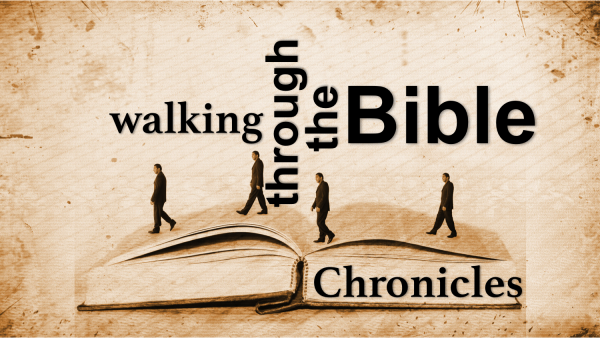It should be noted, however, that the first 2,950 years of history are given in a very brief genealogical form, comprising the first nine chapters of I Chronicles. Following that the remaining 550-600 years is recorded in the following fashion: (1) I Chronicles 10-29 record the reign of David; (2) II Chronicles 1-9 record the reign of Solomon; and (3) II Chronicles 10-36 record the history of the kings of Judah leading up to the captivity, and then the proclamation to return home.
Again, though similar, another difference between the accounts of Kings and Chronicles would be the purpose for which they were written. I and II Kings, in all probability were written for the benefit of those in exile because the account concludes with the people being led away to Babylon. However, I and II Chronicles records an additional seventy years’ worth of history, concluding with Cyrus decreeing that Israel return and rebuild their city, nation, and lives. Therefore the books of Chronicles were probably written for the benefit of those who survived the exile and were returning home.
Another difference of distinction between the Chronicles and the accounts of the Kings is the scope of the text. I and II Kings, in addition to I and II Samuel, were written primarily to give a political history of Israel and Judah. However, the Chronicles takes a different approach to the history of the nation, relying on the religious history of the Davidic reign in Judah, being written from a “priestly and spiritual perspective.”
The name “Chronicles” was given to these writings by Jerome in the fourth century A.D. and makes reference to their literary form as diaries or annals. The title given to the books in the Hebrew translates into the “Words of the Day” or “Journals.” They were written, as believed by most scholars, sometime in the late fifth century B.C. some time after the end of the Babylonian exile and the return of the nation to Palestine. Tradition most widely links the writing of these books to Ezra the priest. Dunn stated the similarity between I and II Chronicles and the book of Ezra writing, “They are written from a priestly viewpoint: genealogies, temple worship, ministry of the priesthood, and obedience to the law of God. Also the closing verses of II Chronicles (36:22-23) are repeated with minor changes as the opening verses of Ezra (1:1-3). Chronicles and Ezra may have been one continuous history as were Luke and Acts.” Also, Jewish tradition states Ezra to be the human penman.
The theme of the Chronicles could probably not be summarized any better than it was by Wilkinson and Boa:
“Because it was written to the returning remnant, Chronicles has a more positive thrust than Samuel or Kings. It does not deny failures but concentrates on the messianic line, the temple, and spiritual reforms. The readers needed encouragement in rebuilding their heritage. Chronicles teaches that Yahweh (Jehovah) is still with them – He brought them back and enabled them to rebuild the temple. All is not lost; though the glory has departed and they are under the control of Gentile powers, God still has a future for them. The throne of David was gone but the line of David still stood.”
It was through that line of David that the Christ is seen and pictured in I and II Chronicles. In I Chronicles the genealogy of the first nine chapters serves as a preamble to the genealogy of Christ in Matthew 1. And in II Chronicles He is seen through the providential hand of God preserving all that was needed to put away the threats to the Messianic line, but to see it through as was His eternal purpose.
I and II Chronicles, though similar in many ways to I and II Kings, serves as a valuable tool in the Christian’s understanding of the One through whom salvation is made possible. May God’s longsuffering nature and undeterred promise of redemption through His Son serve as an inspiration to all Christians to give glory to God in word and deed.

